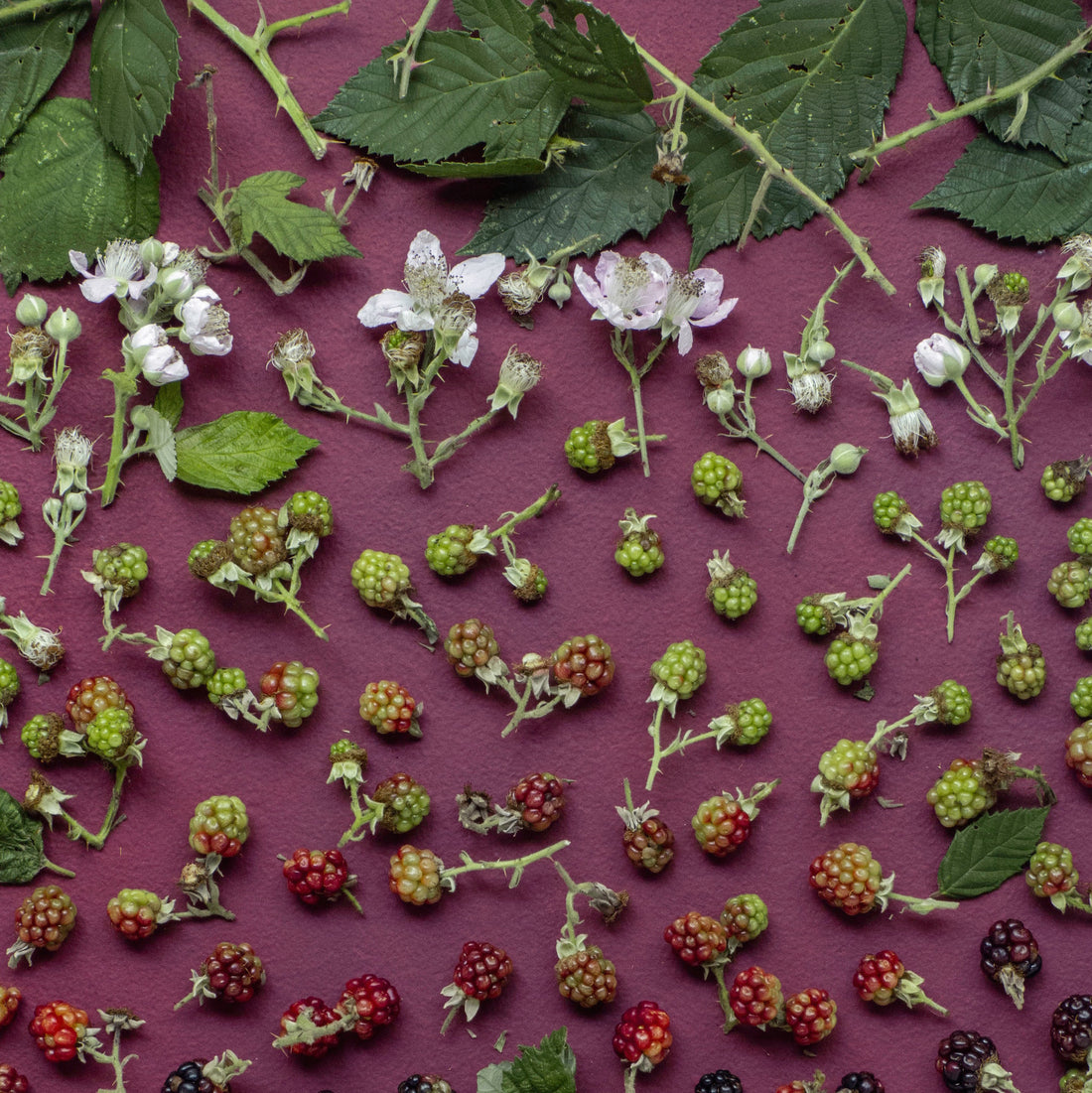
More and more people are going vegan or plant-based. By now, it is well known that going completely or at least mostly vegan is beneficial for your health and for the environment. But making the transition to a plant-based lifestyle can seem challenging, especially in societies where eating meat as the main part of the meal is the norm.
Some may even get discouraged because other plant-based eaters, who may be well-intentioned, may inadvertently make transitioning conscious eaters feel guilty for still having cravings for meat or still having a fried chicken once in a while.
I became a completely plant-based eater in early 2018. I had the support of teachers and friends who did not pressure me with their own beliefs about veganism. When the switch finally happened, it was so natural that I didn’t even realize I had been 100% on a plant-based diet for half a year.
"Nothing will benefit human health and increase the chances for survival of life on Earth as much as the evolution to a vegetarian diet" - Albert Einstein
I believe that going plant-based is a personal choice that anyone can make and succeed at without feeling unnecessary pressure or guilt from outside influences. It’s important to know yourself, your body, and your intentions for choosing this type of lifestyle to be able to make the change as smooth as possible.
(Although there are differences between vegan and plant-based, I chose not to get into those details in this article and for simplicity, I use the two terms interchangeably.)
The Levels of Conscious Eating
I learned about different levels of conscious eating from one of my teachers, a shamanic healer based in Bali, Indonesia. She honoured whatever stage of consciousness any individual person is at. She believed that whether you are a meat-eater or a full on breatharian you can still practice conscious eating in your own way.
Although she recommended eating plant-based, organic, mostly raw high vibration food, she also explained that any level of conscious eating is already enough to start raising your energetic frequency. There are various levels/stages from non-conscious eating to high conscious eating and everything in-between.
1. Not conscious at all - eating everything with no regards for content, source, nutritional value, etc…
2. Conscious of where your food comes from and still eats anything whether natural or processed, organic or GMO, etc…
3. Conscious of where your food comes from and starts to make changes.
4. Buys and eats food from stores that are certified organic, fair trade, non-GMO, etc…
5. Only eats food that they have grown and/or slaughtered themselves.
6. Eats mainly plants and still includes no-kill animal protein products like eggs and dairy. (Different types of vegetarianism) Meat may still be eaten but only for sacred and ceremonial purposes.
7. Eats only plants with a strict no animals or animal products rule (Vegan and Plant-based)
8. Eats only uncooked, raw plants. (Raw Vegan)
9. Eats only high-vibration food that are organic, raw, GMO-free, and/or grown by themselves.
10. Eats only fruits and vegetables that have already fallen from the plant.
11. Consumes only water and some other liquid sustenance.
12. Sustains themselves through prana from the air and sunshine. (Breatharian)
3 Easy Ways to Transition to a Plant-Based Lifestyle
Once you decide to raise your consciousness through the high-vibration plant based food you eat, these are a few tips that helped me stick to a healthy vegan diet even while eating with others who are not vegetarian or while travelling.
- Write down your personal reasons for going plant-based
I find this to be the most important step for success. Your reasons for transitioning to a plant-based lifestyle are personal. Whether you are going plant-based for animal rights, to curb climate chaos, for your own health, or to follow a trend, write down all those reasons and keep going back to it as a reference. Your reasons may also evolve over time to become more strict or more lax with what you eat or what you buy. Don’t hesitate to allow yourself to flow with that change too.
To share my own intention for going plant based, I learned more about the modern animal agriculture industry and how most large-scale livestock farms do not have the health of the animals in mind. Their priority is profit from the sale of meat -- no matter if that meat is healthy or diseased. I no longer wanted to support that type of industry so I decided that I would only purchase meat from small farms that did not abuse their animals or inject them with antibiotics or feed them a slurry of pellets that are not naturally part of the animals’ true diet.
Needless to say, it’s quite difficult to find a farm that met my requirements so I started to eat less and less meat.
- Keep track of your cravings
Rather than forcing yourself to control your cravings, keep track of them and what your body is really trying to tell you by searching for particular tastes. Eggs are still an animal product that I often still crave but learning more about egg substitutions and listening to my body’s nutritional needs on an intuitive level, helped me satiate these cravings more effortlessly.
Sometimes simply eating broccoli, cashew “cheese” with nutritional yeast, and nori or spirulina satiates my craving for eggs. I am not a professional nutritionist, but this observation has shown me that my body was actually looking for a boost of folate, B12, or iron when I was having those egg cravings.
(If you think your cravings may be pointing to a more serious nutrition deficiency, consider taking a blood test and have it analyzed by a health professional or nutritionist who is supportive of your choice to transition to a plant-based lifestyle.)
But sometimes it’s not only the nutrition that my body is looking for but emotionally, I also still crave for the texture of eggs in my meals. I found ways around this with creative plant-based food substitutions, depending on the type of texture I am looking for.
Soft boiled eggs: Coconut that is still a bit young will have white meat that is slightly runny like a soft boiled egg. I collect the coconut water to drink and scrape all the runny meat into a saucer. Top this with a dash of pepper and tamari and it tastes just like soft boiled egg as served for breakfast in countries like Singapore and Malaysia with a side of toast.
Hard boiled eggs: Avocados at just the right age -- not yet ripe enough that it’s sweet and creamy, but not so unripe that it is bitter and hard -- has a consistency that is very similar to hard boiled eggs and the avocado taste is so subtle that it can be covered up with salt, pepper, and other spices to make it taste just like an egg.
Scrambled eggs or omelettes: Many recipes use tofu as a substitute for meat and eggs in many plant-based recipes. But since most soy today is GMO, I would strongly advise to stay away from soy-based products. Instead, chickpea flour or mung bean flour can be mixed with water and salt into a slightly runny pancake-like consistency to make an egg-omelette substitute.
Sunny side up eggs: I have not personally craved for sunny side up eggs, however, the golden yolk part of the egg can be visually substituted with squash and the white part can be fakes with silken tofu as in this YouTube video to make a Vegan Egg.
If you can find black rock salt, the high sulphur content in it gives it a very distinct odour and will also help give any dish an egg-like flavour.
These are just examples for eggs, but if you find yourself craving for butter, beef, chicken, lamb, pork, bacon, or other meat, there are delicious and healthy plant-based substitutes for all of those too.
However, if nutrition, texture, and flavour substitutes don’t work to satiate your cravings for animal proteins, then give yourself and your body a break and eat a little bit of it. Even George Oshinawa, creator the macrobiotic diet, said that sometimes these cravings are simply the body being depleted of Essential Amino Acids (which make up protein) and he said, “it is better to satisfy the craving by eating a little amount of what is craved. Usually this craving will disappear by eating small amounts of such foods.” (Rice and the Ten Day Rice Diet. Richards, Lennie, et. al. 1971)
- Practice Ahimsa -- Non-violence and Compassion -- Towards YOURSELF
Ahimsa is the first of the Yamas outlined in Patanjali’s Yoga Sutras. This Sanskrit word is translated as harmlessness, non-violence, and benevolence towards all beings. Most people use this as a reason for going vegan because one must not kill and must view all beings with compassion.
While I believe this is true, I also believe that we tend to forget to allow ourselves to be compassionate towards ourselves too. Many of us came from families and societies that have grown used to eating meat daily. And not out of necessity like cultures that developed in regions with extreme climates that could not support agriculture. Vegans and those who want to go plant-based are seen as the outliers and our intentions and resolve are regularly questioned and even challenged by those who do not believe that a diet that does not include animal protein can be healthy.
Take it easy on yourself. Allow yourself time to transition and listen to what your body needs and is telling you about what you are consuming. Practice ahimsa towards yourself first and this mindset will follow for all other beings more easily.
While it is advised that you consult with a health care or nutrition professional when you make drastic changes to your eating habits, you intuitively know your own body better than anyone else can. Know your own resolve for changing your lifestyle into a plant-based one and don’t let anyone make you feel inferior if your reasons are different from theirs.
 Article Guest Written By Jan Diwata who is a travelling yoga teacher and innerdance facilitator. She has held space for immersions and workshops across Asia, Canada, the Middle East, and Europe. She continues to deepen her knowledge and practice of yoga, not only as a physical exercise, but as a spiritual path and incorporates her learnings with her roots in the ancestral wisdom from her Philippine heritage of healing and connection to the Divine. She is available for bookings anywhere in the world. Connect with Jan over at http://www.jandiwata.com. Read more of Jan's articles on The OM Collective here>>>
Article Guest Written By Jan Diwata who is a travelling yoga teacher and innerdance facilitator. She has held space for immersions and workshops across Asia, Canada, the Middle East, and Europe. She continues to deepen her knowledge and practice of yoga, not only as a physical exercise, but as a spiritual path and incorporates her learnings with her roots in the ancestral wisdom from her Philippine heritage of healing and connection to the Divine. She is available for bookings anywhere in the world. Connect with Jan over at http://www.jandiwata.com. Read more of Jan's articles on The OM Collective here>>>

